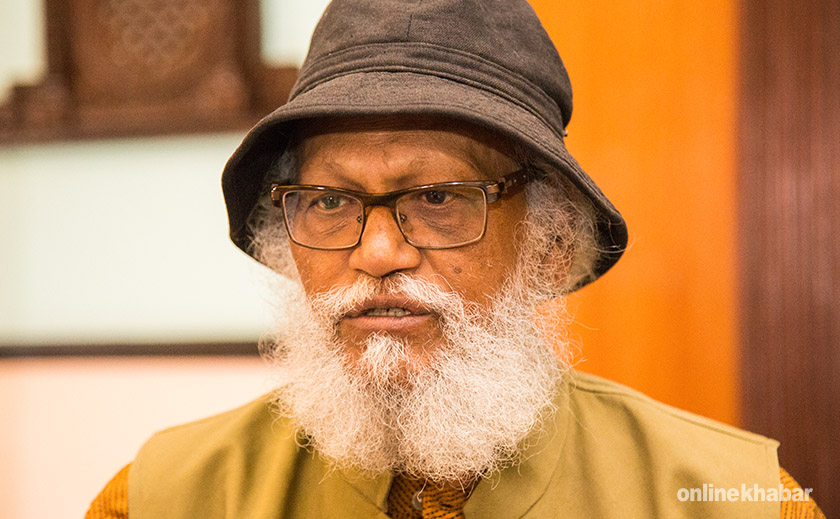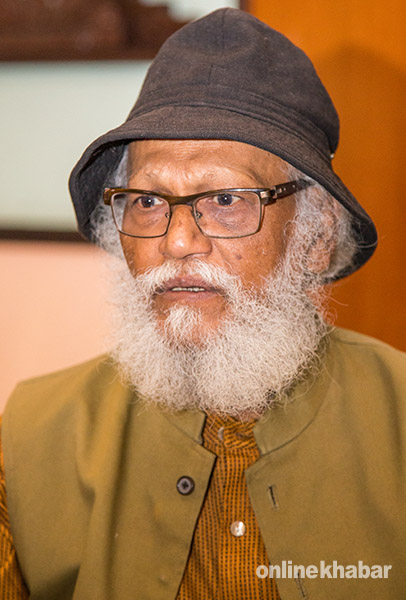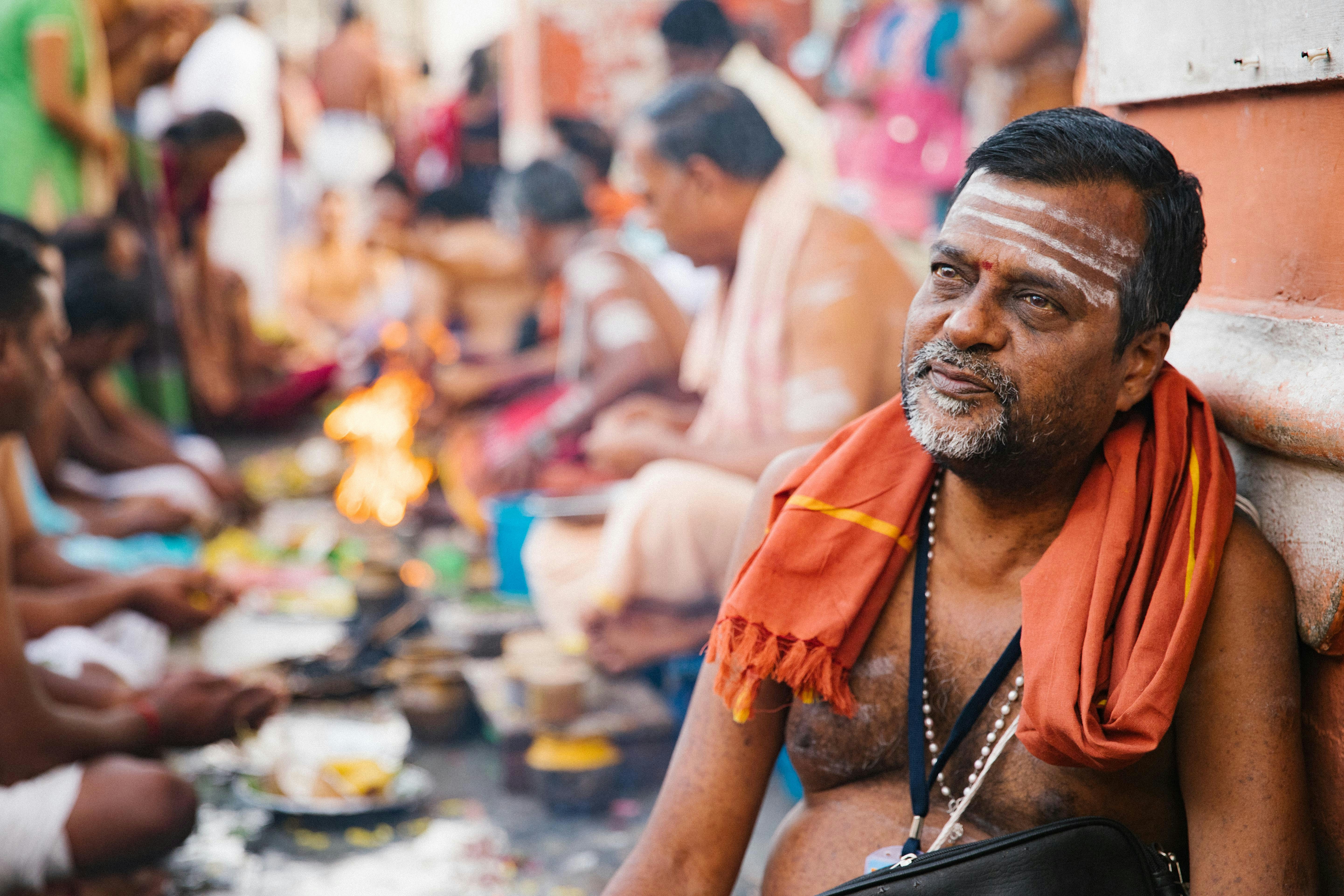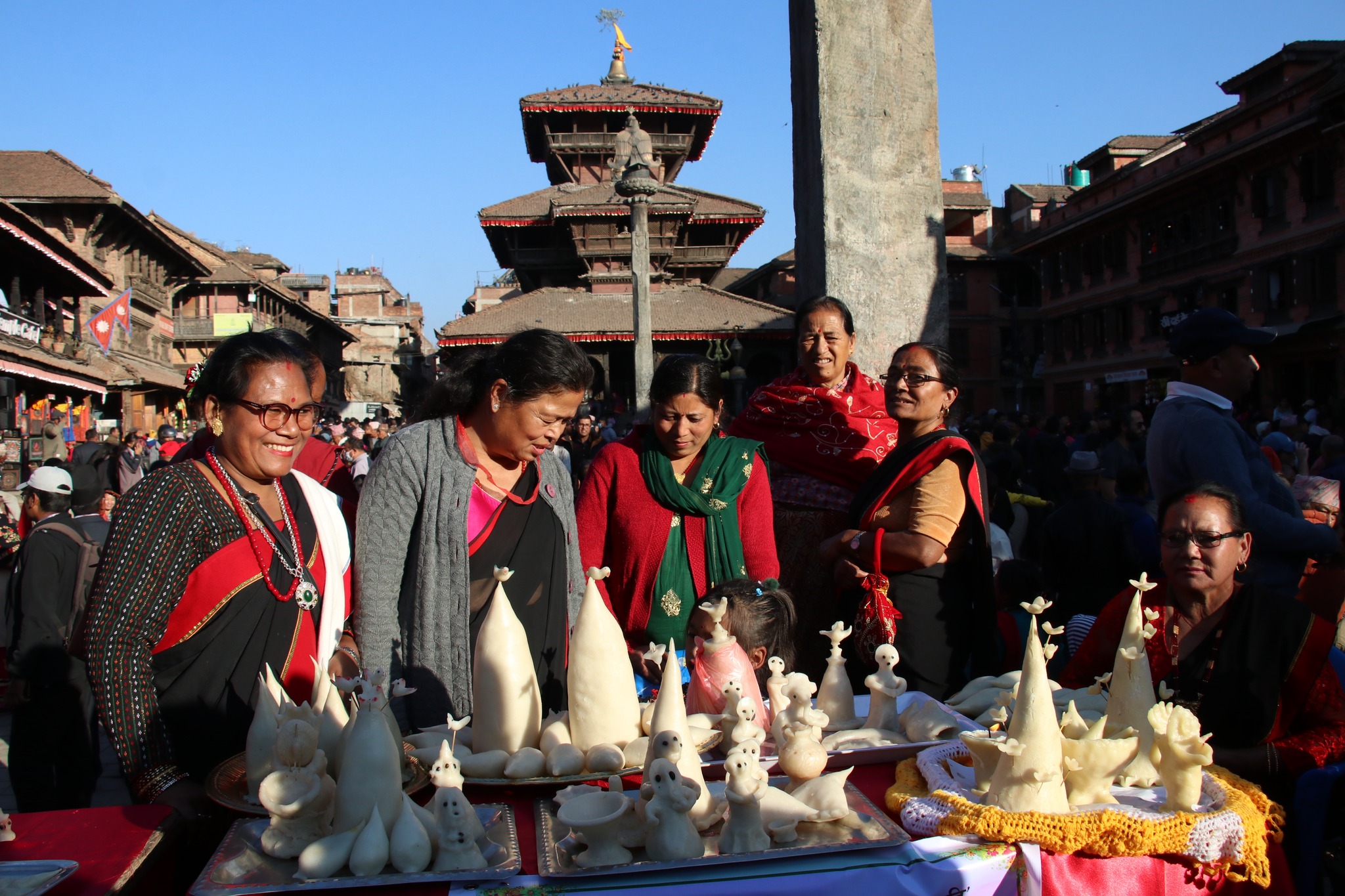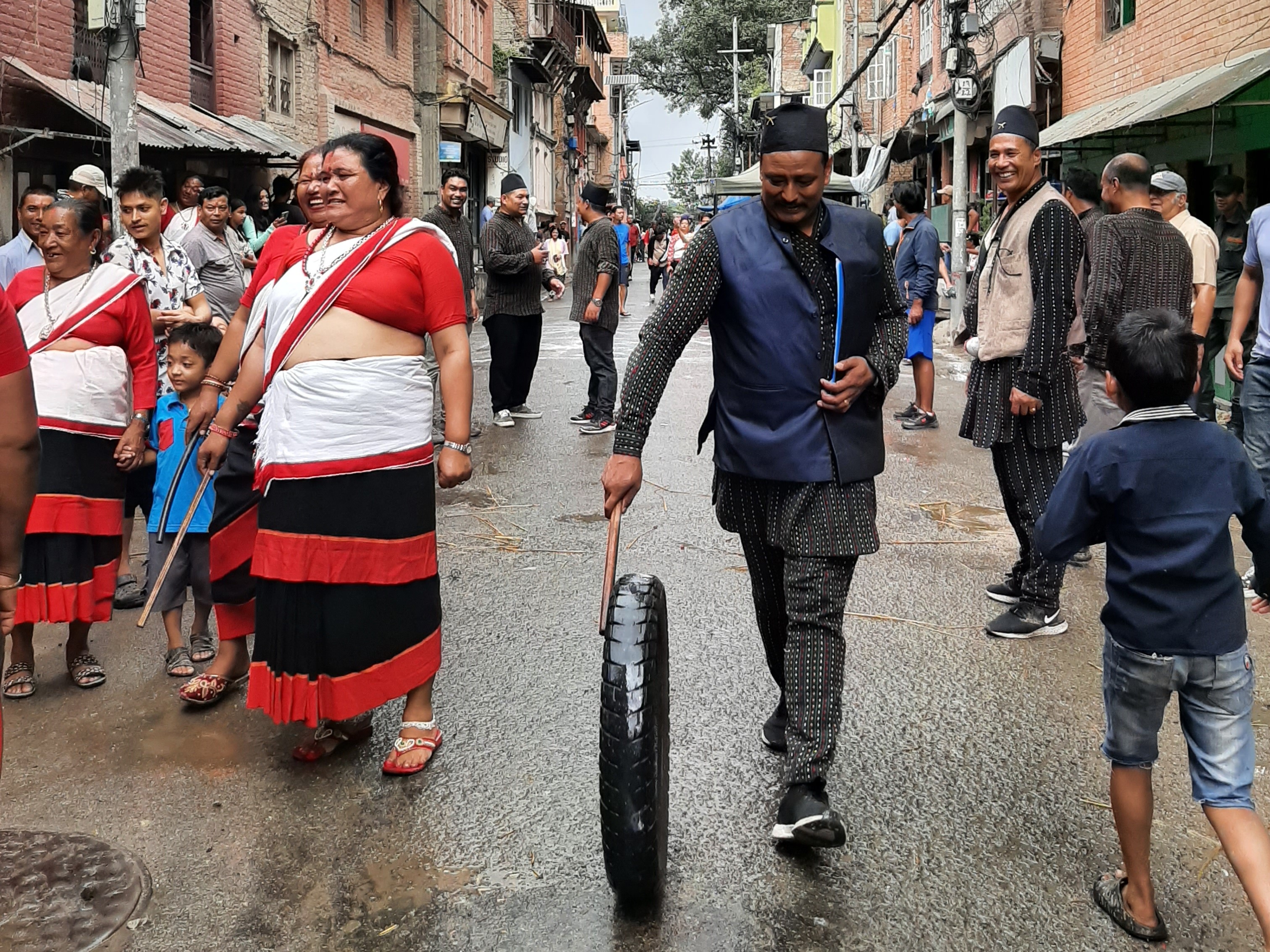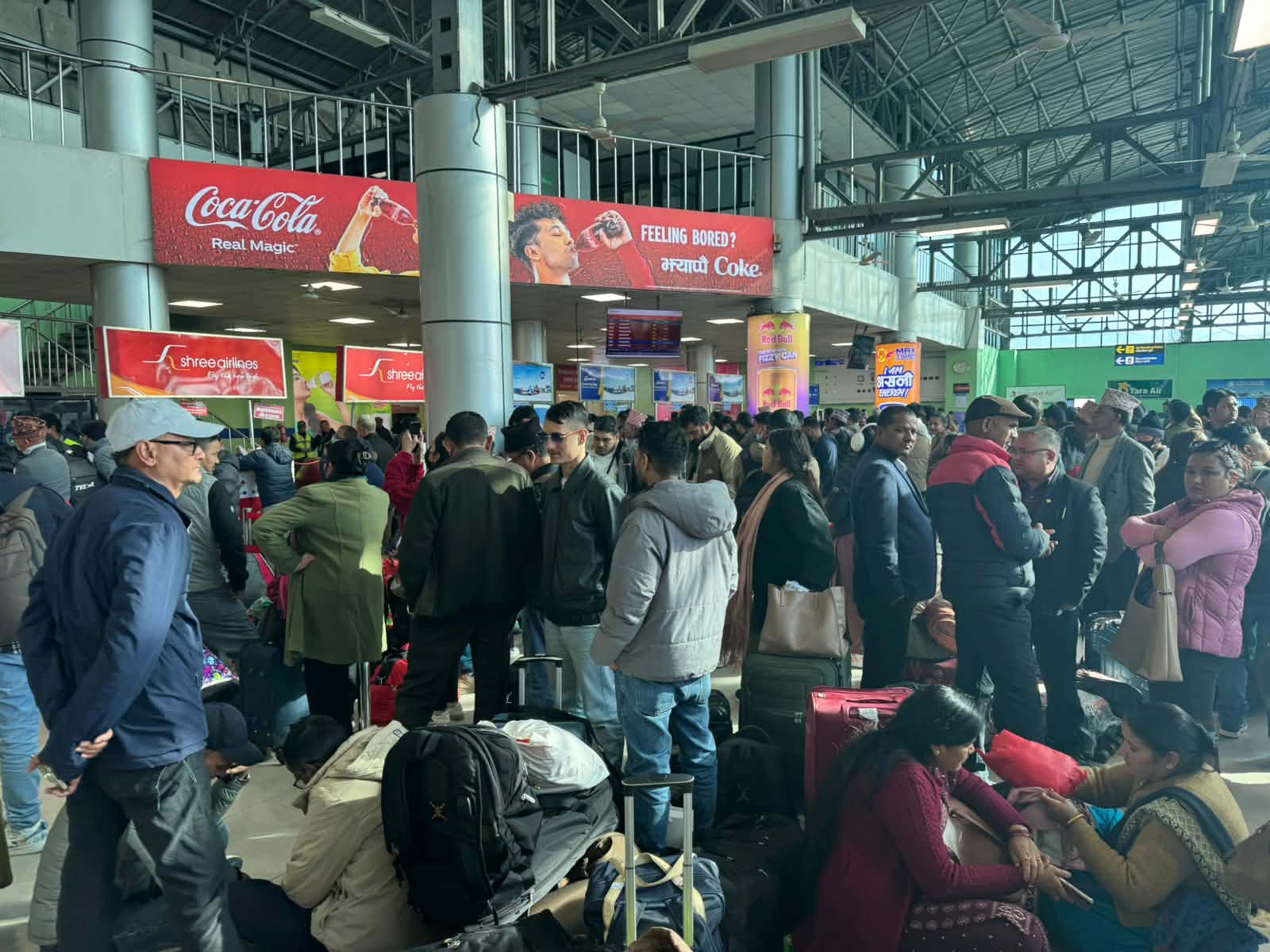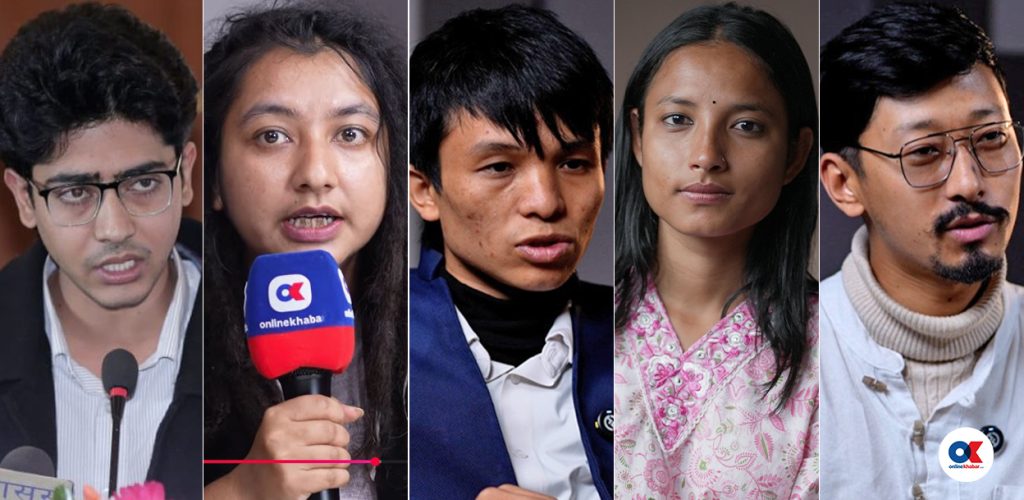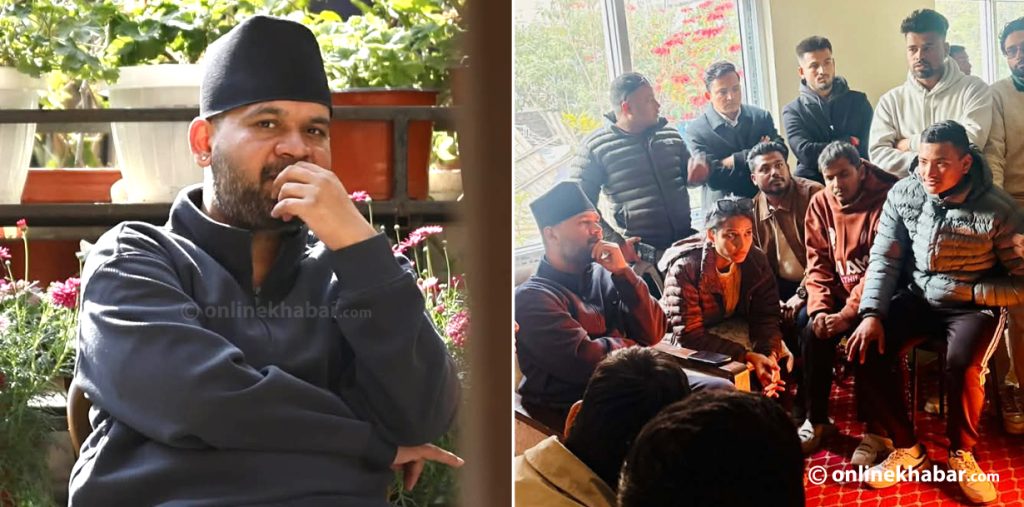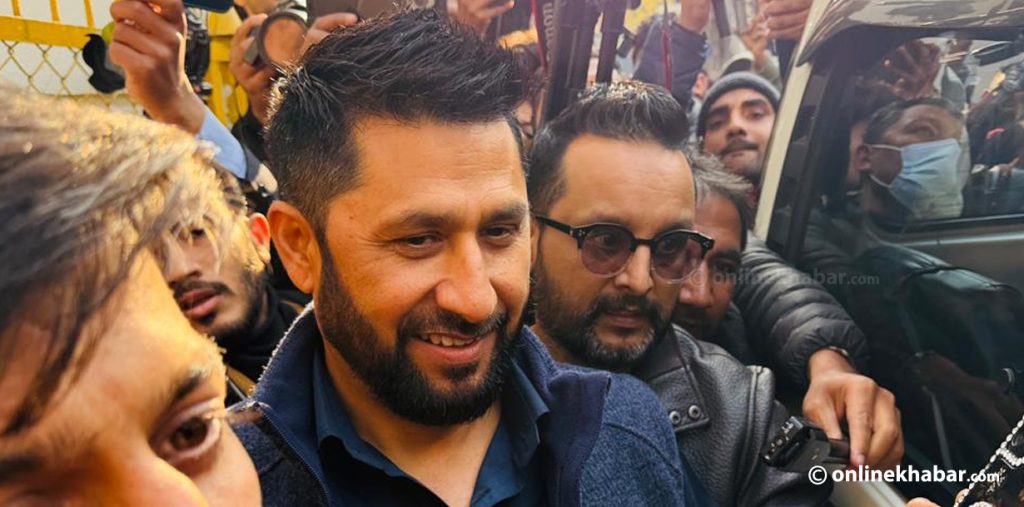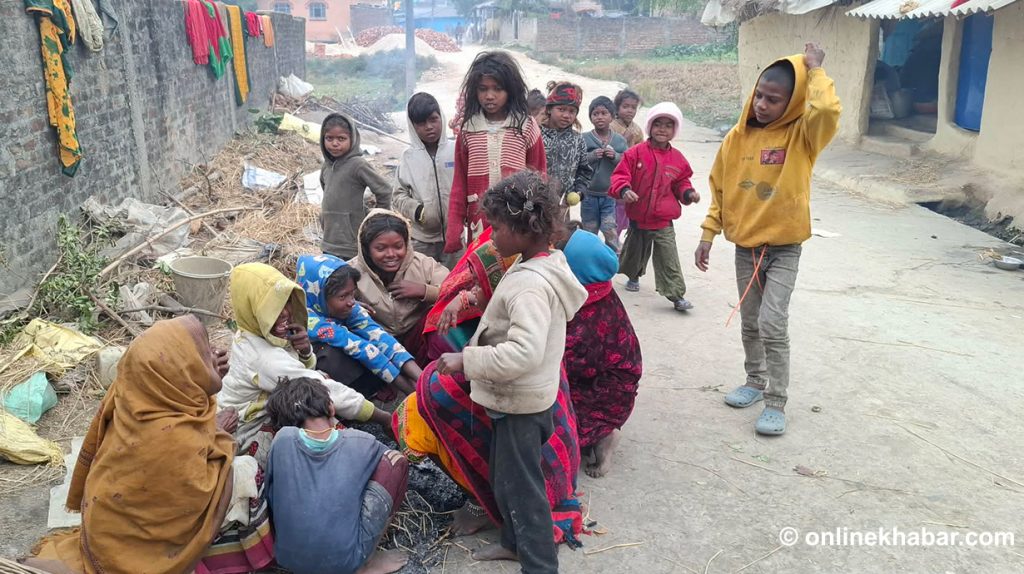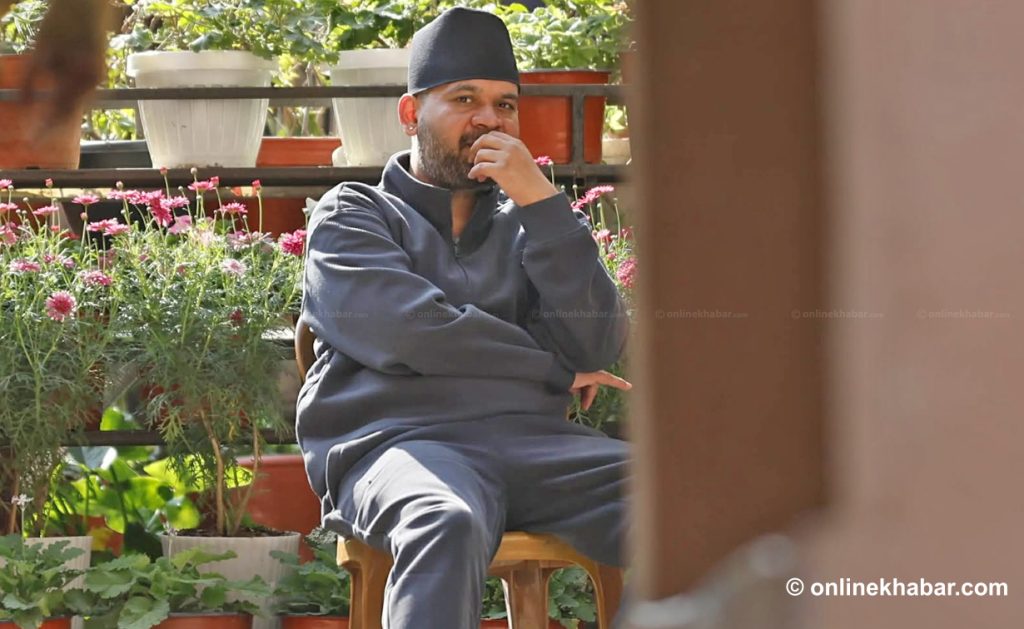Jatin Das is one of India’s most prominent painters. Born in Mayurbhanj Orissa in 1941, Das studied at JJ School of Art. Having painted for over 50 years, Das has delivered lectures at various universities around the world. He was awarded the Padma Bhushan, India’s highest civilian honour, in 2012 for his contribution to the Arts. Onlinekhabar recently talked to Das about his paintings, and arts in general. Excerpts from an interview, and a lecture he delivered.
First of all, could you tell us something about your paintings? The figures you paint are bare; they do not have any background to them. Why so?
My paintings are without architecture or narrative, they are without any story. They are out of context. Let me tell you why that is so. Suppose I beat you without having the knowledge that you are a journalist and you are from Nepal, then I am beating you as a human being. Quite often when we meet someone we have a ‘mind blockade’. A real meeting can take place only when we do not have a blockade in our mind.
You said this is your first visit to Nepal, and you were impressed with what you saw in Bhaktapur. What type of inspiration did you get from the places you visited?
You see I am not a photographer. For me inspiration comes from everywhere, and it gets digested within me.
What are the things you would like to discuss during this visit to Nepal?
As you know, in every family in Asia, when someone wants to learn painting or music, the members of his/her family tells him/her there is no money in it, you won’t be able to survive. The same thing happened to me. My parents wanted me to become a doctor; so I studied Biology for two years, but later dropped the idea and went to Bombay to study painting.
“Our children vomit whatever they have memorised in their exams, and get grades.”
It is sad that families in this part of the world want to make their children mid-level people with a car, house, and children.
The other thing I want to talk about is that it’s been over 60 years since the British left. But still we are continuing the practices of the decadent colonial rule. For this we cannot blame the British. Our children vomit whatever they have memorised in their exams, and get grades.
We do not question why we wear a tie. It is expensive for a poor man, it gets into your food, and a child can strangle another with it. But we do not question why we are wearing it. I was recently at a village near Dehradun, children were reading Daffodils, which they never see.
As a result of our education, we are all living two lives these days: an artificial social life and a personal life, both of which are not interconnected.
What would be your take on what is traditional art and what is modern art?
I have deep interest in traditional art. Look at the beautiful temples built without using concrete, also look at the wood carvings and the woodwork created without using any screws. I say that the traditional artists, whom the Britishers downgraded as being mere ‘artisans’, are the real artists because they have learnt their art. But they are the real artists. I would say that 99.99 per cent of modern artists do not compare to the traditional artists.
“I would say that 99.99 per cent of modern artists do not compare to the traditional artists.”
You have been saying that we in the subcontinent have lost a sense of historicity. Could you explain.
The sense of historicity starts within the family. If you do not possess a dress or a garment of your grandfather or piece of furniture that has been passed down through generations, then you are not preserving. The sense of historicity in our part of the world should have been greater because we have a longer history that the west. The US is just a few hundred years old, and there’s nothing now in Europe. But the case of Europe was different because they preserved what they’d built.
But in the subcontinent, we do not give a thought to preserving our mud houses. We believe in the philosophy that everything is just a means, and everything is temporary. The houses will all go, but the temples must stay.
It is high time we introspect and take steps to preserve what we have. If we are to build museums, we should build them where the collection comes from. For example, if we want to build a hand loom museum, it should be in the village where hand looms are used. Some of it can go to the national museum, but the main museum needs to be in the village so that children know and understand their history.
“Wherever I go I tell people to start a collection of their own so that they can become a part of a museum in the future.”
Wherever I go I tell people to start a collection of their own so that they can become a part of a museum in the future. I have been collecting fans (pankhas) from different parts of the world, and it will soon become a part of a museum.
To conclude, I would say that our people are very lovely. What we are seeing now is just a result of bad education, and bad governance. We as people of this subcontinent should promote cultural exchange in a stronger way. We have been looking at Paris and London for more than 300-400 years, now it’s time we turn to our own areas.
***
Also read
I came here to make an impact, but Nepal made an impact on me: ‘Burning Man’ sculptor David Best



